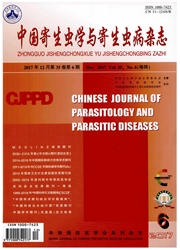

 中文摘要:
中文摘要:
弓形虫复杂的生活史包含多个生命阶段、多种宿主和多种生存环境,从一个阶段向另一个阶段的转换,对外部环境的适应,均需要精密的基因表达调控机制。生物信息学分析表明,弓形虫缺乏其他真核生物典型的转录因子,却存在着丰富的表观遗传学机制。相关研究证明,弓形虫在转录后水平存在着以组蛋白修饰为主的大量修饰机制,如乙酰化、甲基化、磷酸化、泛素化和类泛素化等;同时发现弓形虫非编码RNA在弓形虫的基因表达调控中发挥了重要作用。这些结果为进一步揭示弓形虫的致病机制,从而有效防治弓形虫感染提供了可靠依据。
 英文摘要:
英文摘要:
Toxoplasma gondii undergoes a complex life cycle that involves multiple development stages, hosts and environments. The ability to transform from one stage to another and adapt to changing environments demands precise regulation of gene expression. Bioinformatic surveys of the sequenced genomes of T. gondii revealed a peculiar absence of DNA-binding transcription factors that are well-conserved from yeast through humans, but a wealth of epigenetic ma- chinery present in T. gondii. Evidence from reports demonstrates that remodeling of the chromatin structure particularly through post-translational modifications of histories, such as acetylation, methylation, phosphorylation, ubiquitination, and sumoylation, is potentially a major process that coordinates regulation of its gene expression. In addition, no-coding RNAs may play an important role in modulating gene expression of T. gondii. These results provide reliable foundations for prevention of toxoplasmosis by revealing its pathogenic mechanism.
 同期刊论文项目
同期刊论文项目
 同项目期刊论文
同项目期刊论文
 期刊信息
期刊信息
